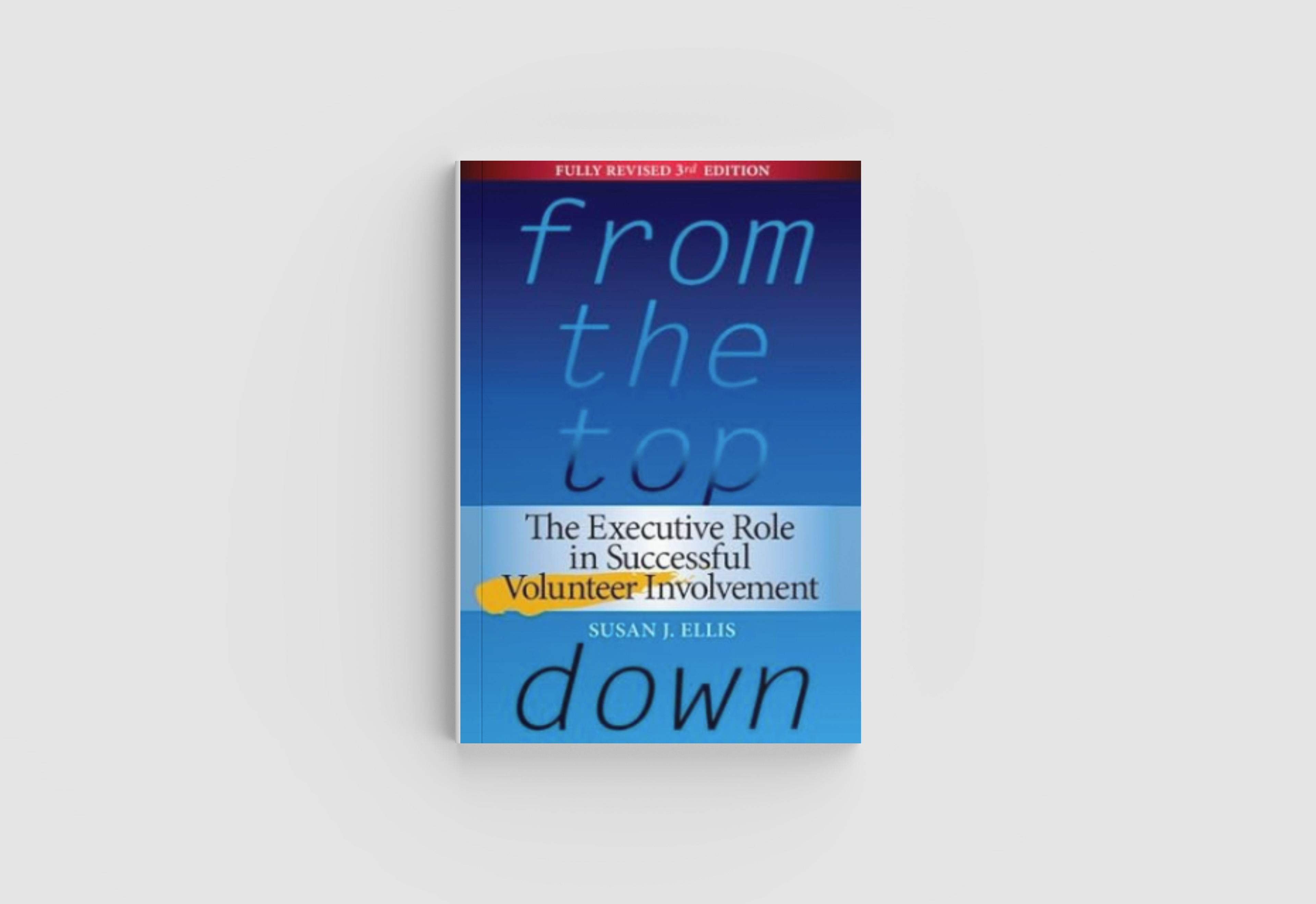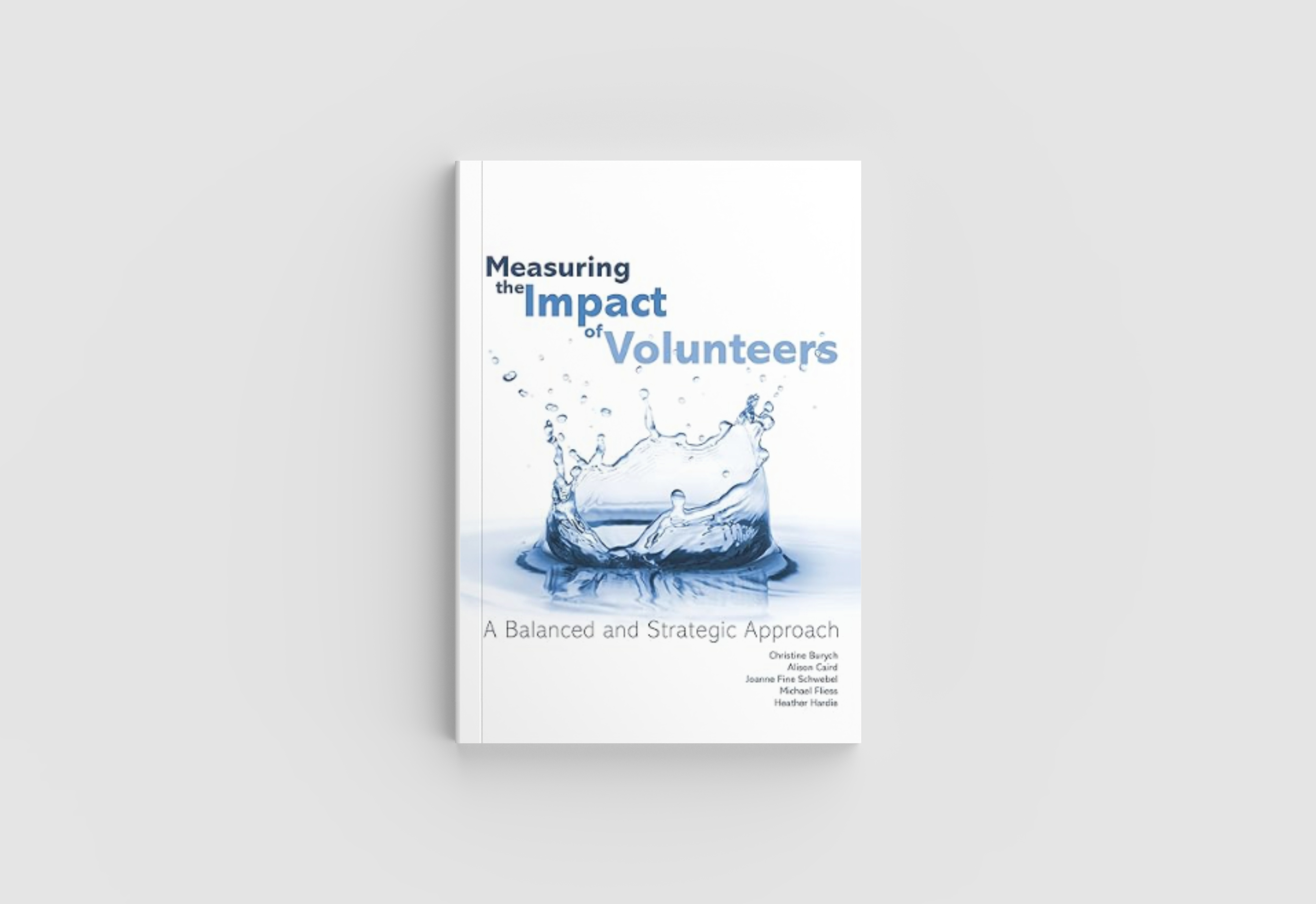Curious: The Desire to Know and Why Your Future Depends on It by Ian Leslie
The second in a series of Better Impact Book Bites – A taste of great books worth consuming.

From The Top Down: The Executive Role in Successful Volunteer Involvement
by Susan J. Ellis | UK Edition by Susan J. Ellis and Rob Jackson
Available as e-books here: https://www.energizeinc.com/store
The first in a series of Better Impact Book Bites – A taste of great books worth consuming.
For this review I read the US version (second edition) and the UK edition. I discovered there is a US (third edition) from 2010 that somehow slipped through my fingers. Any edition will work, but I quite liked the mention of typewriters, cyberspace, and slide projectors from 1996. Susan J. Ellis passed away in 2019 and left behind an incredible wealth of knowledge and protégés who continue to share her beliefs and research. Her written archives remain vibrant and her friends speak proudly of her from around the world. She was an incredible voice and gave her time so generously to others.
I first read From The Top Down in college while studying volunteer management. My second read was five months into the pandemic when I was gripping tightly to our profession, and I found Ellis’s words reassuring. My third read was in preparing content for my own volunteer management certificate program. Most recently, I approached the text once more but added the voice of Rob Jackson in the UK edition. I guess you can say I’m a huge fan of this book, and it doesn’t get old. I checked in with Betsy McFarland from Energize Inc. about this title and she said, “I still find it relevant and valuable.”
Ellis wrote with the CEO or Executive Director of the organization in mind and addresses their responsibilities directly. While those in executive leadership roles are a key audience who will gain a deeper understanding of volunteer management from these pages, I would recommend any person overseeing a Volunteer Engagement Professional (VEP) should read this book. Many from our profession are hired into roles where their direct supervisor has no experience with volunteerism or volunteer program management. It’s a great primer for discussions to come and brings a shared vocabulary to the workplace. Impact, engagement, value, principles, best practices, ethics – so many terms which deserve context and frequent analysis. When we have a shared vocabulary, it elevates meaning and reinforces definitions for professional practices. My perspective below is as a leader of volunteers myself, speaking to those in this profession.
Your boss.
Also, gift this to a VEP in your life or someone studying for their CVA exam. If you volunteer for an organization, give one to their volunteer lead. If you know someone about to retire and dive into the world of volunteerism for the first time, this might be helpful to draw back the curtain, especially if they have never engaged with a nonprofit or social service organization.
From the very beginning of the book, Ellis points out the VEP is charged with encouraging volunteers to be “creative and innovative partners in service delivery, and then expect the best.” She goes on to say we must be open to the potential of what might develop, and we will discover the ways to encourage volunteers’ success. There were a few times re-reading either edition I thought, “gosh, I wish there was more training on this.” I think this point about having vision is one of those areas. Especially for new VEPs or those charged with starting a program from scratch, the concept of drafting a vision for the entire program can feel daunting. Having vision for the future and creating strategic planning goals can lead to innovation. I feel more VEPs don’t nominate their programs for awards or recognition because they feel they’re not innovating; they are responding. Daily operational needs are always going to exist but does the VEP have an opportunity to dream, to think big, and to mobilize resources in new ways? Hopefully, during these last two years there have been opportunities for VEPs to try new things with great success, and we’ll start hearing more from them. There are a few podcasts already interviewing leaders of volunteers who have pivoted during the pandemic and launched new and exciting volunteer opportunities. A training on vision could also talk about innovation related to volunteer programs – I’d sign up! I think From The Top Down has so many seeds we need to plant and nurture to see growth in our programs and careers. What are some you’d like to see blossom?
Throughout the book there are references to a lack of training about volunteer engagement with paid staff who do not work in the volunteer department. Many organizations train all staff on how to be aware of phishing scams in their inbox but cannot make time to provide even the basic volunteer management guidance. This book explains supporting organization-wide training must come from leadership. In 2022, there are so many options in how a VEP could present materials to other paid staff. If the VEP is truly the in-house expert on volunteerism, then at some point they will be ready to train on expectations, best practices, risk management, and capacity building in the language of the organization. This communication should be comfortable and encourage staff buy-in. VEPs must receive support to get in front of staff and provide the training or have funding available to bring in outside trainers. Doing this is not easy, but in my experience, it gives the VEP so many valuable public speaking, content creating, and presentation making skills – everyone wins. The paid staff can build a mutual relationship with the leader of volunteers, receive important training, and be introduced to a safe space to ask questions and receive support.
Nearing the end of the first 100 pages, Ellis had a mic-drop moment when she said, “If one has a low level of expectation about volunteers, volunteers will act accordingly – largely because they will end up being poorly recruited, trained, and supervised.” Boom. I could also see this being true if leadership has low expectations of the VEP – they will feel unrewarded, unrecognized, and invisible compared to other staff positions. How do you raise expectations of the volunteer department within your organization?
Oftentimes when I read a book, I pause and my age or my place in time offers context. What I felt after finishing this book again and hopping on a few Facebook groups for volunteer managers was – why are our pains still the same? Then I read an article from Engage by Rob Jackson and Erin Spink titled New Year’s Resolution: Let’s Get Over Ourselves. It asked, “What problems are actually opportunities we aren’t seeing?” and “what might change within ourselves and our organizations?” As a millennial, I wonder what we have not done to better the workforce by accepting the same problems as leaders of volunteers Ellis described in the original publication from 1986. 1986! With technology tools and communication training, so much has advanced yet the complaints of not having a “seat at the table” reverberates at me during most national discussions. Millennials are a powerful group. We are savvy and passionate, and yet, our woes are the same. Or are they? I checked in with Becca Hand, CVA, Chair of the Texas Volunteer Management Conference and to this point she said, “…or are those just the stories we tell ourselves?” Have previous generations in our profession perpetuated these complaints, and as millennials, have we grabbed on and refused to let go? I’ve told colleagues I have built my own table and opened unlimited seats for anyone to join me. Ellis said it herself – “leaders of volunteers are the in-house expert” for this work (Chapter Four). I don’t think experts are looking for seats. I think they’re too busy focusing the spotlight on the incredible work they perform day in and day out. Perhaps my millennial moment will pass, and I’ll commiserate too but it’s highly unlikely.
I really loved the chapters that discussed the hiring of a leader of volunteers from the CEO/Executive Director perspective. There have been a few blog posts regarding the hiring process, interview questions, writing the VEP job description, and more. I’ve also read plenty of Facebook group discussions about salaries and frustration when a leader of volunteers is denied entry at the management or senior coordinator level. The debate addresses the best ways to advocate for higher salaries, greater titles, and better organizational chart placement. The comparison to a Human Resources Department is not lost on me. I have consulted with a few organizations with such low expectations of applicants to fill their newly created VEP position that it was hard for me to take their whole intention seriously. It is false to assume there are not seasoned and experienced candidates out there. I keep seeing these positions filled with those lacking volunteer engagement degrees, experience, training, or credentials. If the hiring manager had read this book, their expectations would be much higher for what a dynamic and trained VEP can do across an organization.
The introduction says there will always be new people seeking service for the first time and new ways to give back. From original publication to now, those things have not changed. Could we have imagined that standing in line for toilet paper and delivering it to others would be an act of love and caring? It was amazing to watch new volunteer opportunities arise during the pandemic and people trying out volunteering for the first time. Something else that hasn’t changed from the introduction chapter is “complex organization must develop clear ways for volunteers to participate in volunteering, otherwise they do not understand how to become involved.” I feel like the longer we are in this profession, we sometimes forget the nuances of getting started and how confusing it might be. By creating great websites, some VEPs enter the cycle of answering the phone and directing new volunteers to the website to sign up, instead of having an on-the-spot chat to learn more about them or scheduling an interview. We must find the ways to welcome volunteers and not automate every single step – leave room for listening time.
Early in the book there is the mention of volunteers as insider/outsiders. I think everyone should better understand this concept. Staff need to comprehend what this means, and volunteers should be aware of how this impacts their relationship to the organization and to fellow volunteers. When I train at my organization, I try to explain in a local government setting our volunteers are also taxpayers and voters. They are neighbors, patrons of our facilities, and friends. Bringing taxpayers behind closed doors to see how their money is spent is another lens to the idea we’re bringing in those who live within walking distance from our facility to serve with staff. Explaining we are providing a high level of transparency for our outsiders – who are really insiders when they serve with us – takes some explaining. The book notes volunteers have many shared characteristics with staff and donors too. I’ve carried this concept with me, and when I’m invited into certain spaces, I do raise a concern whether I will be seen as an outsider or how that would impact my objective. I would love to see some training on this.
Even as a Texas girl, I do recommend the UK Edition of From The Top Down. Rob Jackson’s experience, resources, and voice were a great pairing with the original material. You can find out what Rob’s doing now at his website: http://robjacksonconsulting.com/
I leave you with one final quote you’ll find on the last page of any edition, “Volunteers cannot fully and successfully contribute to an organization unless they receive visibility and management attention.” Ellis has written to never let volunteers be invisible workers. This is your call to action for the day: how are you raising visibility for volunteers in your organization? This book has tools, ideas, and words of inspiration to get you started. Happy reading!
I have a list of future titles to review, but I’m always open for suggestions. Do you know of a book that needs to get into the hands of more volunteer engagement professionals? Comment below! This book is available as an e-book or paperback. Visit https://www.energizeinc.com/store
Rob Jackson’s Advancing The Profession podcast: https://podcasts.apple.com/gb/podcast/advancing-the-profession/id1556641117
www.EngageJournal.org - New articles published once a month or more.
www.EnergizeInc.com - “A resource every leader of volunteers should bookmark.” Tony Goodrow
www.Ellisarchive.org - A unique online repository of materials, including articles, research reports, original writings and how-to guidance, that document the evolution of volunteer engagement and management as a field and profession.
Featured Posts

The second in a series of Better Impact Book Bites – A taste of great books worth consuming.

This Month's SelectionThe Power of Moments: Why Certain Experiences Have Extraordinary Impact Authored by: Chip Heath , Dan HeathThe twelfth in a...

This Month’s Selection:Measuring the Impact of Volunteers: A Balanced and Strategic Approach by Christine Burych, Alison Caird, Joanne Fine...